challenges facing express delivery services in canada's urban centres
challenges facing express delivery services in canada's urban centres
challenges facing express delivery services in canada's urban centres
Create successful ePaper yourself
Turn your PDF publications into a flip-book with our unique Google optimized e-Paper software.
Institute of Hous<strong>in</strong>g & Mobility<br />
Challenges <strong>fac<strong>in</strong>g</strong> the EDS <strong>in</strong>dustry <strong>in</strong> Canada's <strong>urban</strong> <strong>centres</strong><br />
used by EDS. And lastly, the expensive adjustments required to retrofit the light rail stops and<br />
street configuration for load<strong>in</strong>g and off load<strong>in</strong>g freight may make this option unviable.<br />
Unfortunately the above-mentioned strategies have not been proven to be fully effective<br />
wherever they are used. They are be<strong>in</strong>g adjusted and adapted <strong>in</strong> various cities to work to their<br />
full potential. It is often difficult to take a strategy that works <strong>in</strong> one location and transfer it<br />
elsewhere with the same results because there are many unique factors specific to each city.<br />
Strategies must be developed for specific cities with the cooperation of all <strong>in</strong>volved parties.<br />
Consider the case of UCC <strong>in</strong> Canada. First, most EDS operators have their hubs located <strong>in</strong> <strong>urban</strong><br />
areas from which they serve the <strong>urban</strong> markets. Some EDS operators have their hubs located<br />
with<strong>in</strong> 2-km of the CBD. However, large scale location of hubs <strong>in</strong> downtowns is unlikely to result <strong>in</strong><br />
improved efficiencies and lower congestion. This is because the <strong>in</strong>-bound traffic of larger trucks<br />
would then <strong>in</strong>crease to downtowns. The large sized trucks are used to serve the hubs where<br />
parcels, letters , and packages are moved to smaller vehicles for <strong>delivery</strong> to f<strong>in</strong>al dest<strong>in</strong>ation.<br />
While the <strong>urban</strong> consolidation <strong>centres</strong> worked well <strong>in</strong> some cities, they failed <strong>in</strong> others. This was<br />
either due to poor implementation or the general <strong>in</strong>appropriateness of this system <strong>in</strong> that city.<br />
One theme that is <strong>in</strong>consistent <strong>in</strong> the literature is the importance of the cooperation of the private<br />
and public sectors <strong>in</strong> plann<strong>in</strong>g solutions to <strong>urban</strong> freight issues. This is vital <strong>in</strong> order to make<br />
decisions that will represent the best <strong>in</strong>terest of all <strong>in</strong>volved parties.<br />
Conclud<strong>in</strong>g comments from literature review<br />
The purpose of the literature review was to exam<strong>in</strong>e what strategies to improve <strong>urban</strong> logistics<br />
have been successful <strong>in</strong> Canada and other jurisdictions. The second purpose of the review was to<br />
determ<strong>in</strong>e if experiences from other jurisdictions could be repeated <strong>in</strong> Canada. With all the<br />
<strong>challenges</strong> <strong>fac<strong>in</strong>g</strong> freight carriers, they have always managed to make adjustments to deal with<br />
them. Communities are constantly try<strong>in</strong>g to deal with congestion issues and environmental concerns,<br />
leav<strong>in</strong>g the freight <strong>in</strong>dustry struggl<strong>in</strong>g to ma<strong>in</strong>ta<strong>in</strong> profits <strong>in</strong> an <strong>in</strong>creas<strong>in</strong>gly competitive market<br />
(Taniguchi, 2002).<br />
Some strategies outl<strong>in</strong>ed <strong>in</strong> this literature review may prove to be effective <strong>in</strong> reduc<strong>in</strong>g congestion<br />
thereby mak<strong>in</strong>g streets <strong>in</strong> <strong>urban</strong> cores easier to navigate. Unfortunately, most strategies observed<br />
<strong>in</strong> other jurisdictions attempt to reduce congestion by mak<strong>in</strong>g it more difficult for freight vehicles to<br />
operate. Large truck bans often do not affect <strong>express</strong> deliveries; however they do force regular<br />
freight operators to make deliveries at times that are often not ideal. This leads to additional<br />
costs that must be passed down to the end consumers.<br />
The literature review suggests that most strategies do not consider the adverse impact of<br />
<strong>in</strong>terventions on EDS. It is apparent that if strategies were devised <strong>in</strong> a more participatory<br />
environment, EDS companies would be <strong>in</strong>volved <strong>in</strong> the plann<strong>in</strong>g and development of strategies to<br />
combat <strong>urban</strong> congestion.<br />
Most research <strong>in</strong> <strong>urban</strong> freight focuses on LTL freight, which mostly comprises large item deliveries<br />
to retail locations and shipments between bus<strong>in</strong>esses. Express and courier deliveries are very<br />
poorly represented <strong>in</strong> the literature. This area of research requires <strong>in</strong>-depth analysis to ensure<br />
that stopgap measures, such as bann<strong>in</strong>g all commercial vehicles from <strong>urban</strong> core <strong>in</strong> peak hours of<br />
Page 61



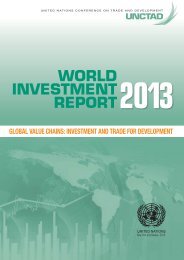



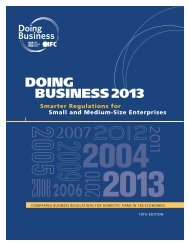


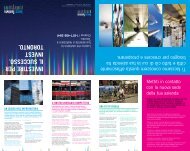
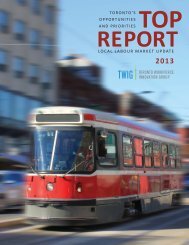


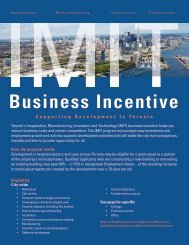

![Creative City Planning Framework [PDF] - City of Toronto](https://img.yumpu.com/24270607/1/190x245/creative-city-planning-framework-pdf-city-of-toronto.jpg?quality=85)